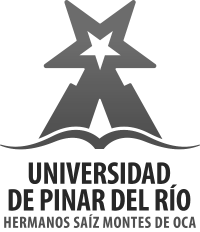Integrated tourism management of natural, cultural and historical resources in the municipality of Manatí, Cuba
Main Article Content
Abstract
Contemporary tourism dynamics demand the integrated management of resources in such a way that they can satisfy social, economic and esthetic needs, while respecting local cultural integrity, essential ecological processes, biological diversity and life-support systems. The objective of the research was to design a tourism product based on the integrated management of natural, cultural and historical resources in the municipality of Manatí, Las Tunas. For its development, the following methods were used: analytical-synthetic, inductive-deductive, systemic-functional-structural, observation, interview and assessment by specialists. As a result, an integrated tourist product was designed, called "Manatí, an unique experience", oriented towards the Canadian market and to commercialize the natural, cultural and historical attractions that have not been currently valued in the municipality of Manatí, which contributes to local development and to strengthen the tourist management of Las Tunas destination in eastern Cuba. The assessment of the product carried out by specialists showed that the product is relevant and of great value.
Downloads
Article Details

This work is licensed under a Creative Commons Attribution-NonCommercial 4.0 International License.
References
Ashworth, G. J., & Tunbridge, J. E. (2000). The Tourist-Historic City. Routledge. https://doi.org/10.4324/9780080519470
Ávila Hernández, J. R., Cruz Aguilera, N., Díaz Pompa, F., Sarmiento Sintes, Y. M., & Ramos Giral, G. V. (2021). Manatí: Un paraíso por descubrir. RECUS. Revista Electrónica Cooperación Universidad Sociedad, 6(3), 52. https://doi.org/10.33936/recus.v6i3.3376
Cardet Fernández, E., Palao Fuentes, R., & González, Y. (2018). Procedimiento para el diseño de productos turísticos basados en el patrimonio de un municipio. Retos de la Dirección, 12(1), 1-16. http://scielo.sld.cu/scielo.php?script=sci_abstract&pid=S2306-91552018000100001&lng=es&nrm=iso&tlng=es
Fernandes, F. (2019). Turistificação e as dinâmicas da hospitalidade: O caso de Lisboa. PASOS. Revista de Turismo y Patrimonio Cultural, 17(6), 1179-1189. https://doi.org/10.25145/j.pasos.2019.17.081
García Reinoso, N., & Quintero Ichazo, Y. (2018). Producto de sol y playa para el desarrollo turístico del Municipio Trinidad de Cuba. Revista Interamericana de Ambiente y Turismo - RIAT, 14(1), 52-64. https://riat.utalca.cl/index.php/test/article/view/441
Gómez Ceballos, G. (2014). Procedimiento metodológico de diseño de productos turísticos para facilitar nuevos emprendimientos. Retos. Revista de Ciencias de la Administración y Economía, 4(8), 157-172. https://doi.org/10.17163/ret.n8.2014.08
Lozano Zamora, A. (2017). Batey Manatí: Entre el pasado y el presente. Batey: una revista cubana de Antropología Social, 9(9), 49-57. https://dialnet.unirioja.es/servlet/articulo?codigo=5825815
Mintur. (2020). Estrategia económico-social para el impulso de la economía y el enfrentamiento a la crisis mundial provocada por la COVID-19. Ministerio del Turismo. https://www.mep.gob.cu/es/node/344
OMT. (1998). Introducción al turismo. Organización Mundial del Turismo. https://www.e-unwto.org/doi/book/10.18111/9789284402694
Perú. (2014). Manual para la planificación de productos turísticos. Programa de Cooperación al Desarrollo Económico | Secretaría de Estado para Asuntos Económicos SECO | Embajada de Suiza en Perú. https://www.cooperacionsuiza.pe/publicacion/manual-para-la-planificacion-de-productos-turisticos/
Ramírez Hernández, O. I. (2019). Propuesta metodológica para la generación de productos turísticos a partir de la comunidad local. Retos. Revista de Ciencias de la Administración y Economía, 9(17), 127-143. https://doi.org/10.17163/ret.n17.2019.08
Ramírez Sánchez, M., & Rodríguez Marín, F. J. (2020). Cementerios patrimoniales y turismo: Una visión multidisciplinar. Síntesis. https://dialnet.unirioja.es/servlet/libro?codigo=776566
Reyes Vargas, M. V., Ortega Ocaña, Á. F., & Machado Chaviano, E. L. (2016). Modelo para la gestión integrada del turismo comunitario en Ecuador, caso de estudio Pastaza. REVESCO. Revista de Estudios Cooperativos, 123, 250-275. https://doi.org/10.5209/REVE.53242
Saravia, M. del C., & Muro, M. N. (2016). Productos turísticos: Metodología para su elaboración. Revista de Ciencias Sociales, 8(29), 53-78. http://ridaa.unq.edu.ar/handle/20.500.11807/1647


